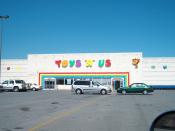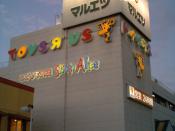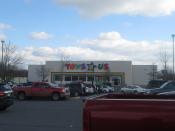Unit 4:Tonya PattonKaplan UniversityGB502Professor: Craig HoveyMarch 24, 2009Historical Forecast on Toys "R" UsWhen people hear the name Toys "R" Us (TRU), they think back to when they were kids. To be able to go into a store made with bricks and mortar and leaving with mom in one hand and the latest toy in the other and a great big smile from cheek to cheek. Having a strong brand recognition, there were no doubts that TRU could continue their successful tradition by holding on to their vision and historical values, which is to "put joy in kids' hearts and a smile on parents' faces"(Toys "R" Us, 2009), even through the Internet.
Charles Lazarus began a business in 1948 entirely committed to children and their needs (Toys "R" Us, 2009). Baby furniture was sold at his first store, but customers began asking for baby toys. Mr. Lazarus considered his customer requests and decided to begin selling baby toys.
After some time, customers began to ask for toys designed for older children and once again he chose to sell this type of toy as well. TRU became successful because Mr. Lazarus tried to give his customers everything they wanted. There were approximately 1,500 stores worldwide and grew into an $11 billion business (Toys "R" Us, 2009). However, Mr. Lazarus did not stop with the traditional "brick and mortar" company; he moved his toy store to the World Wide Web. The toy supermarket was revolutionary in 1957 because this type of retail model was unheard of during this time. In 1978, Toys "R" Us became a public company and manages six different divisions today. These divisions consist of Toys "R" Us U.S., Toysrus.com, Toys "R" Us International, Babies "R" Us, Kids R Us and Imaginarium (Toys "R" Us, 2009). The first e-commerce...


